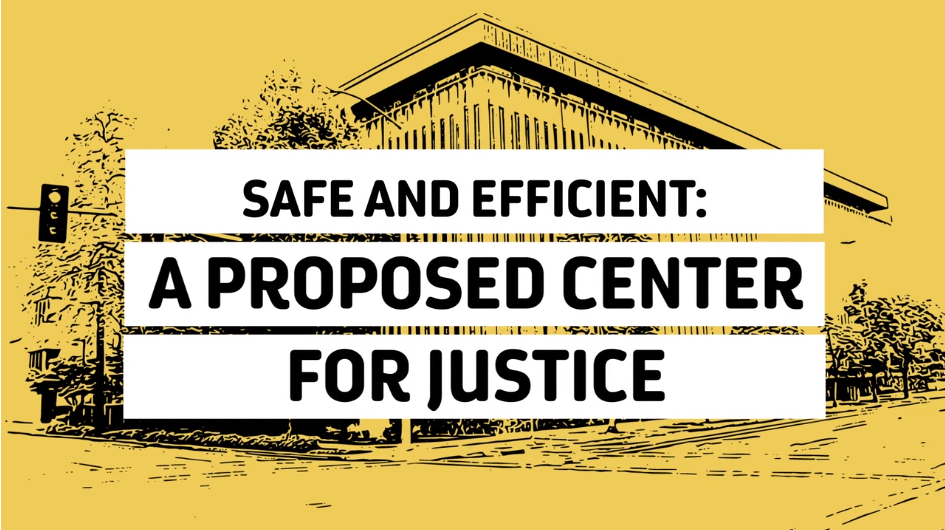The Lane County Courthouse outdoes itself running essential legal processes for Lane County. This one small building houses the Circuit Court, District Attorney’s Office, Sheriff’s Office, Victim Services and more. The services conducted within its walls include everything from traffic tickets and accidents to murder, juvenile court, and family law. With only 15 court rooms and 33,000 cases a year, the building bursts at the seams with responsibilities it can no longer keep up with, which is why a ballot measure (20-299) has been unanimously proposed by the Board of Commissioners to build a new Lane County Courthouse that would have the ability to comfortably hold the departments is needs. The problem of course, is funding.
Keep reading to learn more about the new measure and the changes it proposes. Also be sure to take a look at the video below.
The Measure
If successful, Ballot Measure 20-299 would allot $154 million in bond funding toward the construction of the new building. It’s expected that the State of Oregon would contribute an additional $94 million, and the federal government, $4 million. One caveat: Lane County cannot collect any bond money unless the state does provide the anticipated funding. This project, if passed, would be the largest capital project built by Lane County and largest public project in downtown Eugene. A 20-year bond, the average projected cost for taxpayers is .27 per $1000 of assessed value annually. As an example, a home with an assessed value of $187,000 would pay $50.49 annually.
Out of Space
Lane County Courthouse opened in 1959. It’s the oldest building in Lane County’s possession. The city has ballooned since 1959, but the building has been left to fall behind the community’s needs. Because of the lack of space, last-minute start times and location changes happen constantly not only wasting the time of everyone present, but costing taxpayers money. Plans for the news building proposes conceptual courtroom layouts that use a universal size model with flexible elements. This would better accommodate large juries, specialty courts including those that focus on mental health or veterans, and different types of proceedings and people with limited mobility. With this new plan, all cases would be able to take place in any of the court rooms. No longer would shuffling and last-minute changes be an issue.
Limited Security, No Privacy
Though limited space is an issue itself, it’s also the root of other issues. Without space, people who need privacy and security may not have it. For example, there are no spaces for attorneys to meet with their clients privately. Every year, 2,200 – 2,500 restraining order cases are requested, yet there are no private places to meet with lawyers.
Other problems include the fact that there is only one elevator to transport inmates in and out of the building, and entrances and exits for everyone else are limited as well. Often, opposite parties are exposed to each other when they shouldn’t be.
Wheelchair access is a whole other problem. Doorways haven’t been updated to comply to wheelchair access needs. Jurors in wheelchairs can’t reach public portions of the building without being escorted through restricted areas and back doors. Maintenance issues even include raw sewage leaking through the ceiling tiles. Elevators are so old they often don’t function. On occasion, all elevators quit at the same time which shuts down the courthouse.
Courthouse Beyond Repair
What about simply repairing the original building? Many inspections and reviews have already taken place to assess whether the courthouse can be saved. Even with extensive updates and remodeling, there’s no way that the current need for space and security improvements could be met. In fact, the cost of repairs needed to restore the building, even without adding space and security systems, would be more than the proposed budget for the new building four times its size. In addition, adding space to this building is also impossible. There’s simply nowhere the building could be expanded.
The original courthouse would not be out of commission however: plans to re-purpose the building are already under way. The City has an option to purchase or lease the existing building, but if they don’t exercise that option, the county will likely lease it to private parties or other public services.
What’s to Be Done
A proposed lot has already been selected and purchased from the City of Eugene. Located on the entire city block between E 7th and E 8th Avenues and Pearl and High Streets, this lot would be home to a 7-story courthouse. There would also be room for a 2-story building for the Lane County Sheriff’s office and a parking area that would eventually become a garage. Not only would the building be much larger than the current courthouse, courtrooms would be paired in a new courthouse and a central inmate transport column would serve pairs of courtrooms on each floor solving the safety issues related to lack of separation from inmates. Secure elevators would come from an underground area accessible by police transport so that a secure environment can be maintained leading up to and throughout proceedings.
The Board of County Commissioners adopted five project goals as part of a community benefits agreement for courthouse construction. The agreement would prioritize local businesses and workers, living wages and family health benefits, project workforce diversity and equity, sustainability objectives in design, and training and apprenticeship opportunities.
If successful, this new courthouse is estimated to serve Lane County for at least the next 100 years. Justice partners including Oregon Public Defense Services, Sheriff’s Office and the District Attorney’s Office would be included to increase representation as well. An of course, the new design would allow everyone visiting or working in the building equal access and safety measures.
Speakers:
Devon Ashbridge, Public Information officer for Lane County
Chief Deputy Cliff Harold
Liz Rambo, Lane County Court Administrator
Judge Deborah Vogt
Steve Mokrohisky, County Administrator

